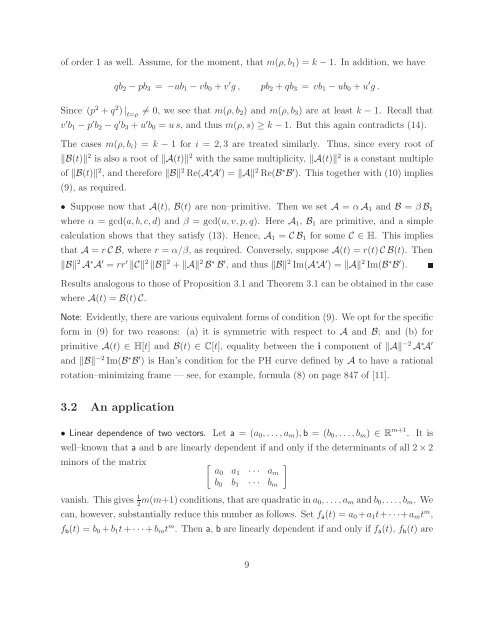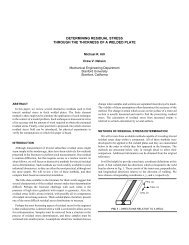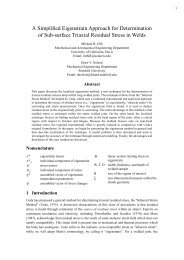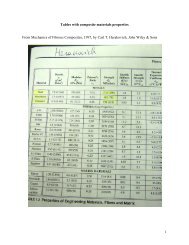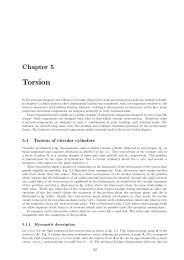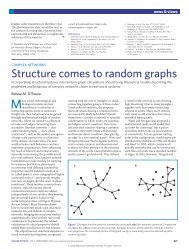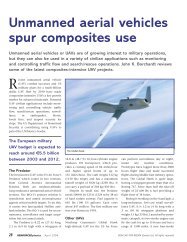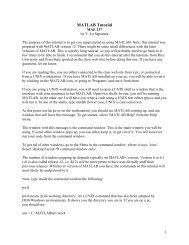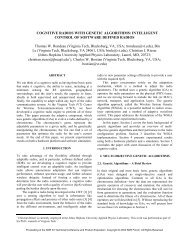Pythagorean-hodograph curves in Euclidean spaces of dimension ...
Pythagorean-hodograph curves in Euclidean spaces of dimension ...
Pythagorean-hodograph curves in Euclidean spaces of dimension ...
You also want an ePaper? Increase the reach of your titles
YUMPU automatically turns print PDFs into web optimized ePapers that Google loves.
<strong>of</strong> order 1 as well. Assume, for the moment, that m(ρ, b1) = k − 1. In addition, we have<br />
qb2 − pb3 = −ub1 − vb0 + v ′ g , pb2 + qb3 = vb1 − ub0 + u ′ g .<br />
S<strong>in</strong>ce (p 2 + q 2 ) | t=ρ = 0, we see that m(ρ, b2) and m(ρ, b3) are at least k − 1. Recall that<br />
v ′ b1 − p ′ b2 − q ′ b3 + u ′ b0 = u s, and thus m(ρ, s) ≥ k − 1. But this aga<strong>in</strong> contradicts (14).<br />
The cases m(ρ, bi) = k − 1 for i = 2, 3 are treated similarly. Thus, s<strong>in</strong>ce every root <strong>of</strong><br />
B(t) 2 is also a root <strong>of</strong> A(t) 2 with the same multiplicity, A(t) 2 is a constant multiple<br />
<strong>of</strong> B(t) 2 , and therefore B 2 Re(A ∗ A ′ ) = A 2 Re(B ∗ B ′ ). This together with (10) implies<br />
(9), as required.<br />
• Suppose now that A(t), B(t) are non–primitive. Then we set A = α A1 and B = β B1<br />
where α = gcd(a, b, c, d) and β = gcd(u, v, p, q). Here A1, B1 are primitive, and a simple<br />
calculation shows that they satisfy (13). Hence, A1 = C B1 for some C ∈ H. This implies<br />
that A = r C B, where r = α/β, as required. Conversely, suppose A(t) = r(t) C B(t). Then<br />
B 2 A ∗ A ′ = rr ′ C 2 B 2 + A 2 B ∗ B ′ , and thus B 2 Im(A ∗ A ′ ) = A 2 Im(B ∗ B ′ ).<br />
Results analogous to those <strong>of</strong> Proposition 3.1 and Theorem 3.1 can be obta<strong>in</strong>ed <strong>in</strong> the case<br />
where A(t) = B(t) C.<br />
Note: Evidently, there are various equivalent forms <strong>of</strong> condition (9). We opt for the specific<br />
form <strong>in</strong> (9) for two reasons: (a) it is symmetric with respect to A and B; and (b) for<br />
primitive A(t) ∈ H[t] and B(t) ∈ C[t], equality between the i component <strong>of</strong> A −2 A ∗ A ′<br />
and B −2 Im(B ∗ B ′ ) is Han’s condition for the PH curve def<strong>in</strong>ed by A to have a rational<br />
rotation–m<strong>in</strong>imiz<strong>in</strong>g frame — see, for example, formula (8) on page 847 <strong>of</strong> [11].<br />
3.2 An application<br />
• L<strong>in</strong>ear dependence <strong>of</strong> two vectors. Let a = (a0, . . .,am), b = (b0, . . .,bm) ∈ R m+1 . It is<br />
well–known that a and b are l<strong>in</strong>early dependent if and only if the determ<strong>in</strong>ants <strong>of</strong> all 2 × 2<br />
m<strong>in</strong>ors <strong>of</strong> the matrix a0 a1 · · · am<br />
b0 b1 · · · bm<br />
vanish. This gives 1<br />
2 m(m+1) conditions, that are quadratic <strong>in</strong> a0, . . .,am and b0, . . ., bm. We<br />
can, however, substantially reduce this number as follows. Set fa(t) = a0+a1t+· · ·+amt m ,<br />
fb(t) = b0 +b1t+···+bmt m . Then a, b are l<strong>in</strong>early dependent if and only if fa(t), fb(t) are<br />
9


